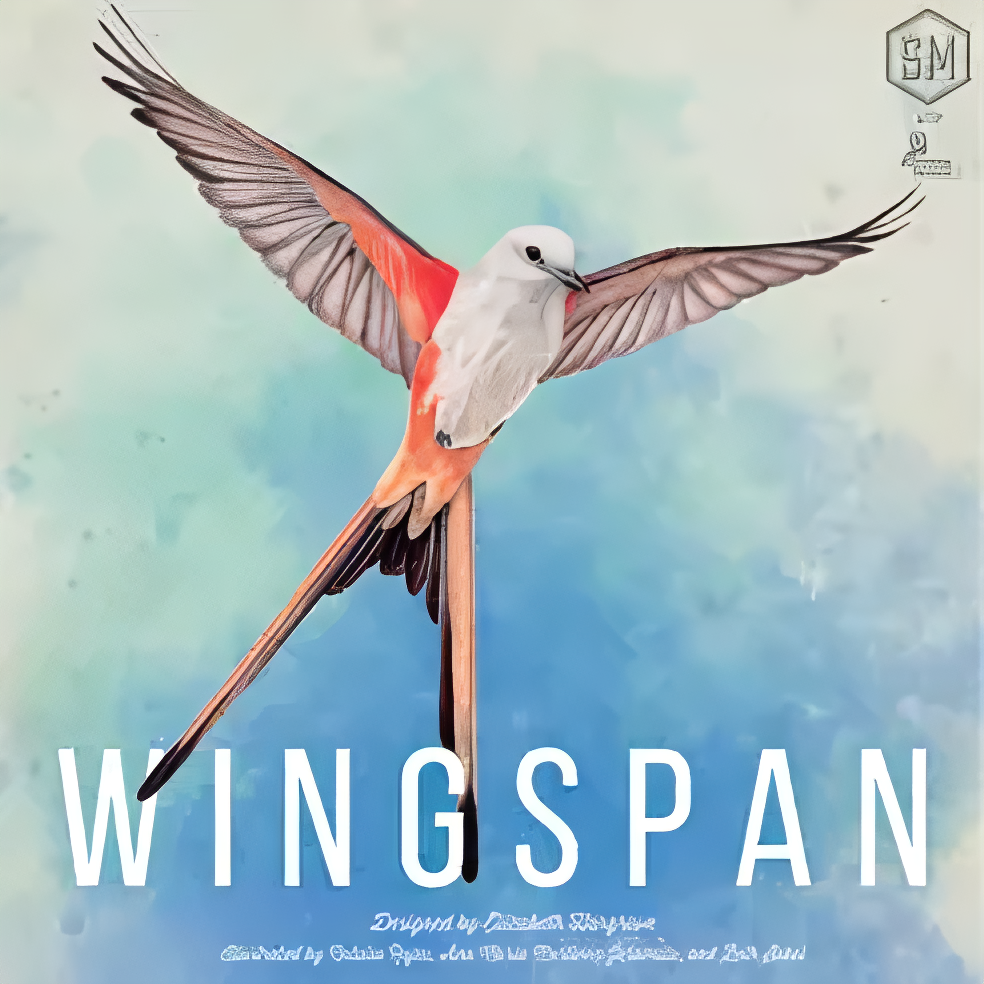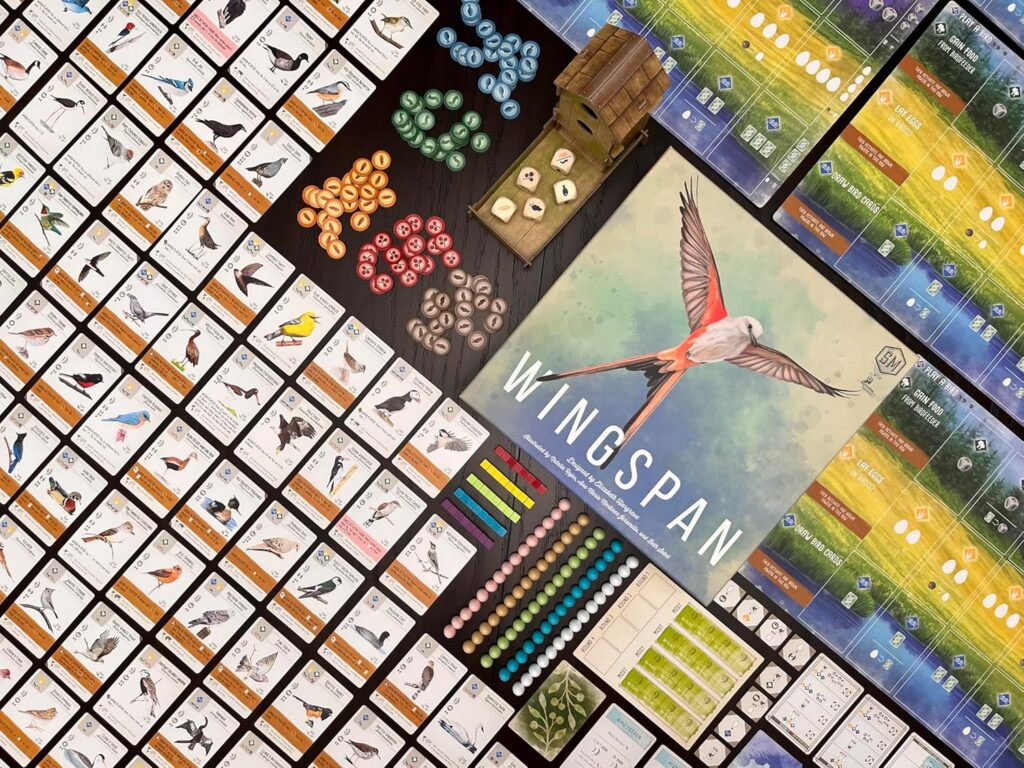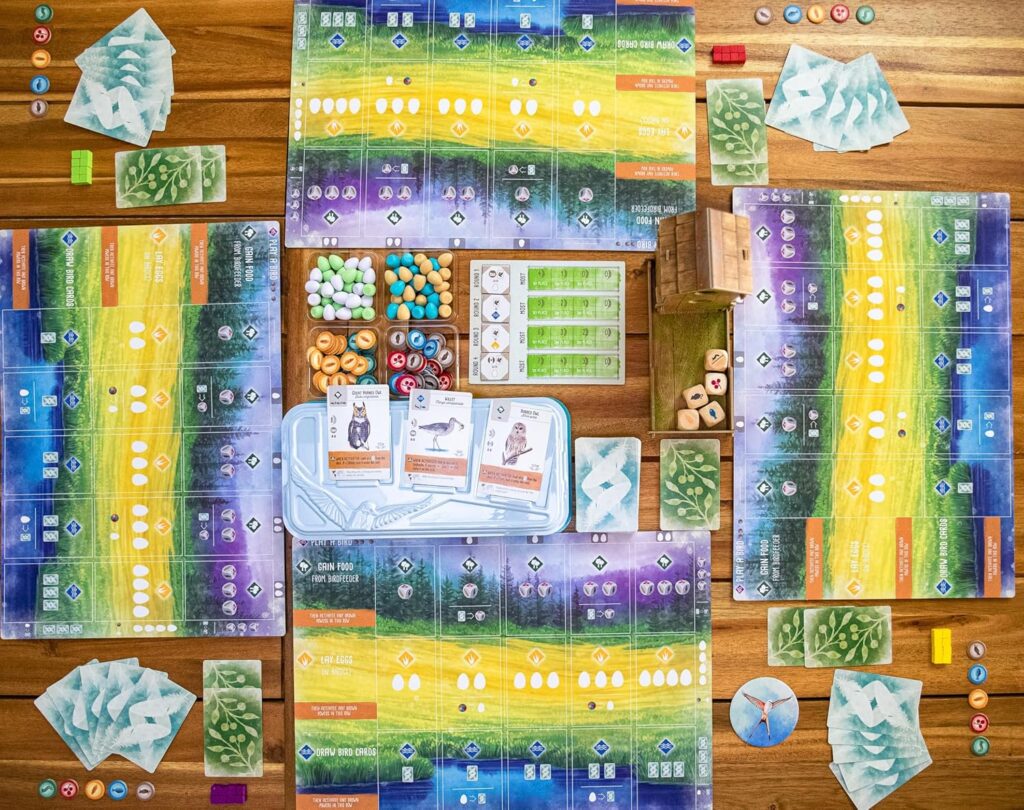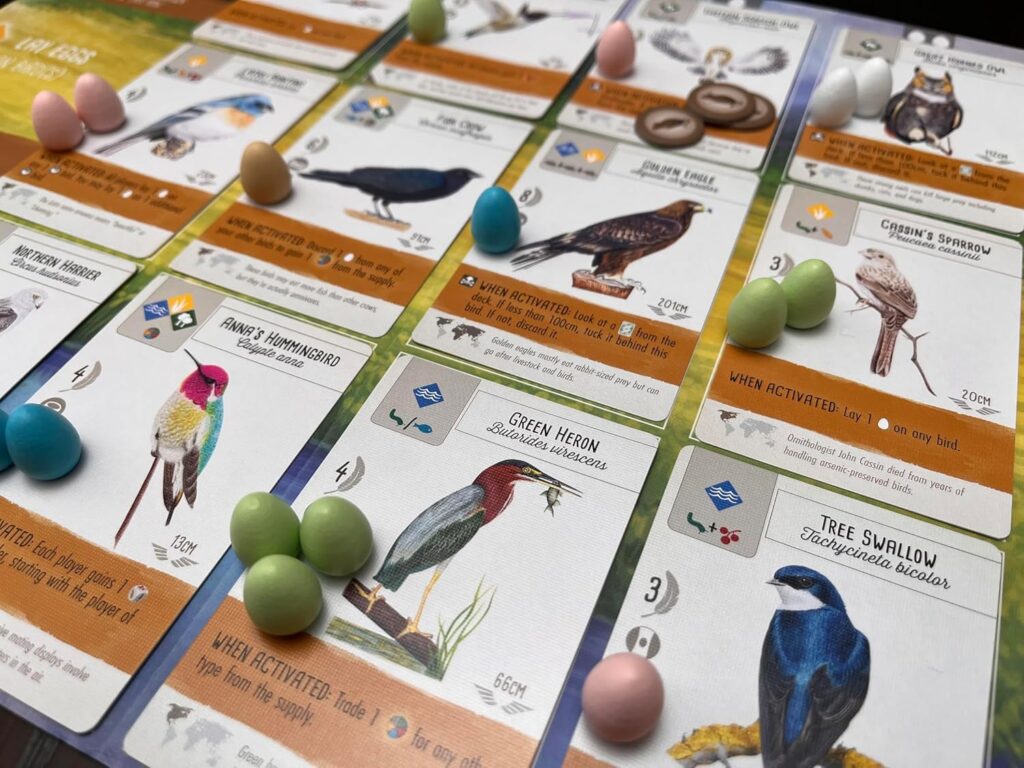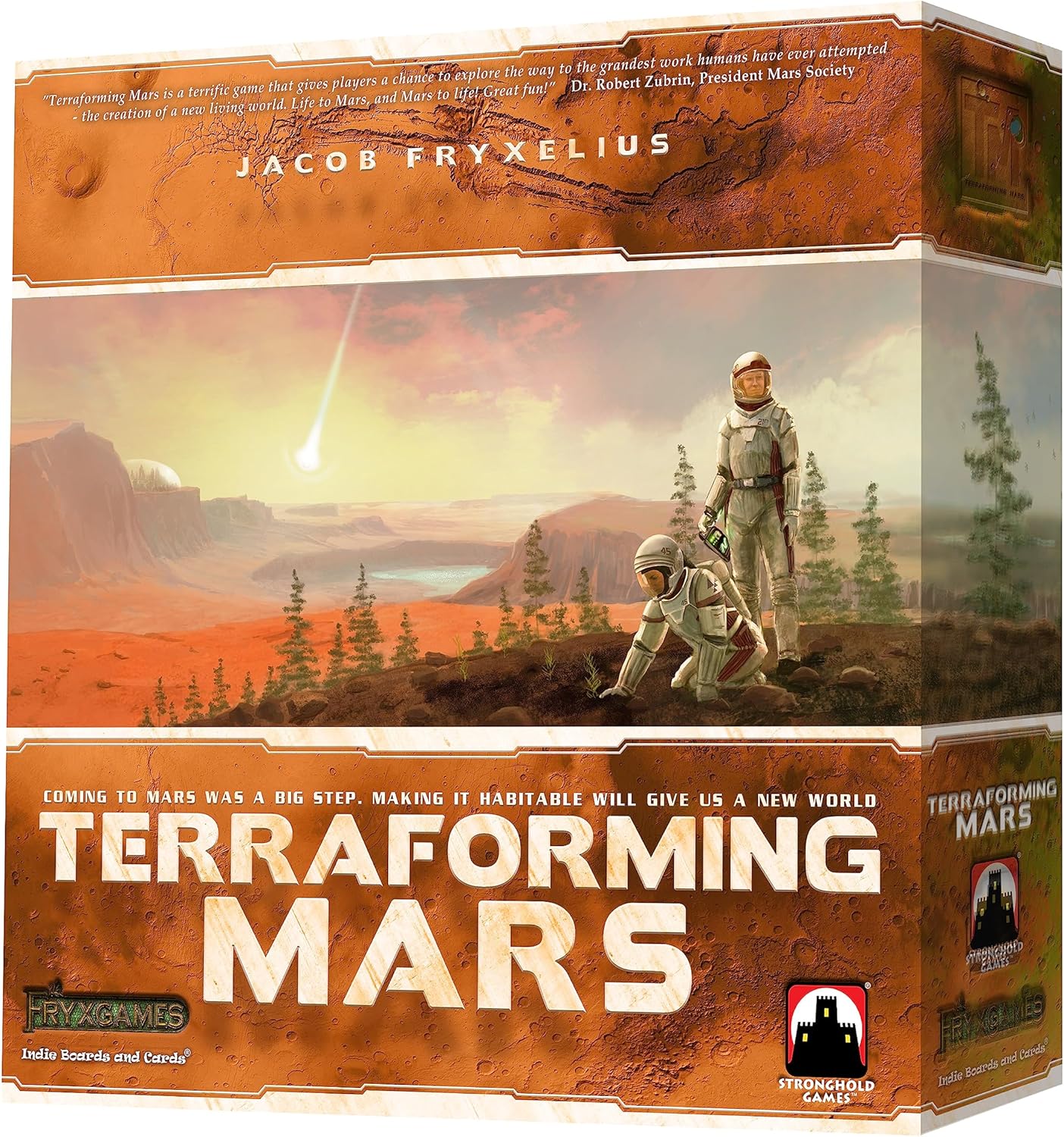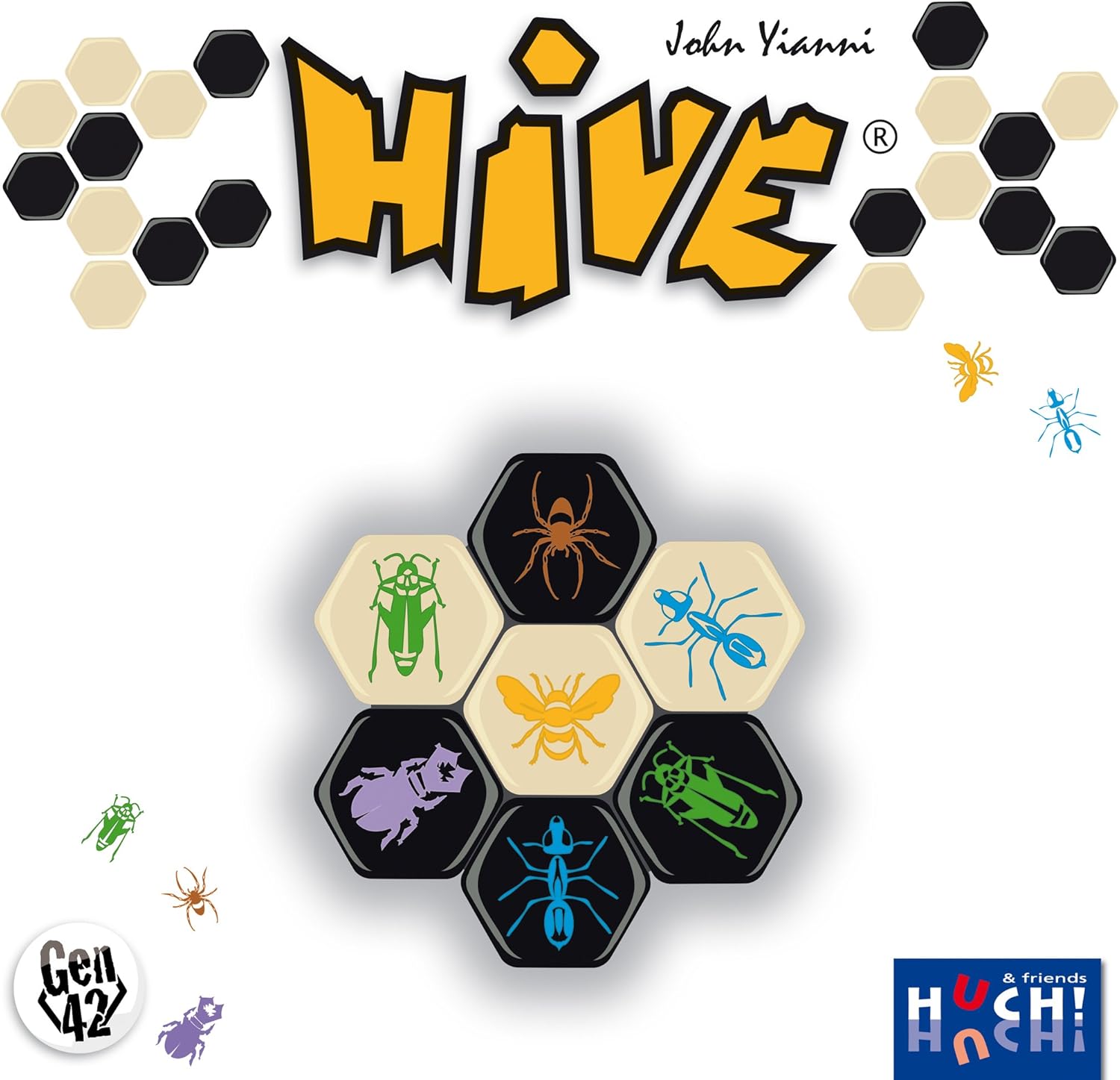Wingspan is a landmark of modern board game design—an elegant, deeply satisfying engine-builder that blends soothing aesthetics with meaningful strategic depth. As players take on the roles of bird enthusiasts managing wildlife preserves, they compete to attract birds across three habitats—forest, grassland, and wetland—each tied to a different core mechanic. While the theme evokes tranquility and harmony, the gameplay is driven by tactical decisions, precise timing, and long-term planning. Over the course of four rounds, players build personal engines that cascade into high-efficiency combos, laying eggs, gaining food, and drawing cards with increasing potency.
What elevates Wingspan beyond its genre peers is how seamlessly its mechanics and theme coalesce. Every bird card features real-world traits—diet, nesting behavior, habitat—which are elegantly woven into the card’s in-game function. This is not simply a tableau engine game with bird illustrations; it’s a system that mirrors ecological relationships and biological behaviors in a way that is both mechanically sound and emotionally resonant. Despite its low-conflict nature, the game generates constant tension and engagement through limited resources, shared round objectives, and the race to build the most efficient engine before the game’s 26-turn arc concludes.
Visual Design & Theme
Wingspan sets a new bar for visual excellence in board games. Every bird card features a hand-painted illustration by one of three artists, all in a soft, naturalistic style that captures the grace and detail of the species depicted. The iconography is subtle yet clear, with habitat types, food preferences, and egg capacities all elegantly displayed. Player boards are cleanly laid out, using color-coded rows for each habitat to keep play intuitive even in late-game complexity.
What makes the visual design so effective is that it doesn’t just serve beauty—it reinforces the theme. Birds that eat from feeders gain food; scavenger birds tuck cards as prey; cavity-nesters lay eggs in specific ways. These connections make the experience feel rooted in nature, not just in gameplay terms but in emotional tone. Playing Wingspan genuinely feels like you’re building a preserve, not just maximizing a spreadsheet.
Production Value
Stonemaier Games is known for high-quality production, but Wingspan is arguably their crown jewel. The pastel egg miniatures are tactile and colorful, offering a satisfying physical anchor to the resource management. The wooden dice, the birdfeeder dice tower, and thick cardboard tokens all contribute to a premium tactile experience. Even the insert is thoughtfully designed, making both storage and setup more efficient.
Card quality is excellent, with linen finish and durable weight, and the rulebooks (one for core play, one for solo) are clearly written and heavily illustrated. While the game already impresses out of the box, its expansions (European, Oceania, Asia) follow the same production standard, adding not only new mechanics but maintaining a consistent visual and tactile experience. This level of attention to detail makes Wingspan as enjoyable to handle as it is to play.
Ease of Learning
Wingspan manages the rare feat of being both easy to learn and strategically rich. The core loop—choose one of four actions per turn—is intuitive and quickly understood. Most bird powers mirror real behaviors, which helps new players internalize what they do. The included reference guides, player aids, and clear iconography help ease players into their first few games, and most are up and running within a single round.
That said, the layering of bird effects, round-end goals, bonus cards, and long-term engine-building creates a satisfying amount of cognitive challenge. Strategic planning and adaptation are rewarded, but not required to enjoy the game. It’s a game that rewards repeat play with deeper insights but doesn’t punish new players for not “solving” it right away.
Setup & Teardown Time
Initial setup may feel component-heavy, especially with new players, but once the game is organized properly—especially using the included plastic storage trays—it becomes routine. Distributing player boards, eggs, food, and bird cards takes about 5–8 minutes. The birdfeeder dice tower adds charm to the setup, even if it requires a bit of space on the table.
Teardown is equally smooth. All components have assigned places, and nothing feels loose or sprawling. For a game of its visual complexity, Wingspan is surprisingly manageable in both setup and cleanup, especially after a few plays.
Gameplay Pace
Turns in Wingspan are quick—at least at the beginning. With only one action per turn and a limited starting engine, early rounds fly by. As bird effects stack and chain together, turns take longer, but rarely in a way that drags. Most delays come from card selection or food choices, especially with new players still learning optimal paths.
Despite the occasional slow turn, the pacing remains steady because all players remain invested throughout. Shared goals and limited bird draw create natural competition, and the declining number of turns per round adds an accelerating tension to decision-making. The last round often ends with players scrambling to squeeze the most out of their engines, making for a satisfying crescendo.
Replayability
Wingspan is endlessly replayable. With 170+ unique bird cards, randomized bonus cards, and modular round goals, no two games play the same. Each session presents new engine-building challenges—should you go for a high-egg-laying grassland build? A food-efficient forest strategy? A card draw-heavy wetlands approach? The game encourages adaptation and creative problem-solving.
What’s more, the expansions add both mechanical and thematic variety. The European expansion introduces new bird behaviors and a stronger emphasis on round-end abilities. Oceania adds a new food type and rebalances the core habitats. Asia adds more player interaction and a stand-alone dueling mode. These layers of content ensure that Wingspan can evolve with its audience, staying fresh well beyond its initial plays.
Conclusion
Wingspan is a serene yet strategically rich engine-builder that balances aesthetics, accessibility, and mechanical depth with remarkable precision. Every element—from art and theme to pacing and production—is working in harmony, creating a game that is as thoughtful as it is beautiful. Whether played solo, as a couples game, or around a full table, it offers a rewarding and elegant experience that few modern games can match. It’s not just one of the best entry points into hobby gaming—it’s one of the best-designed board games of its generation.

